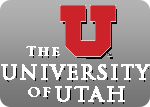Research
Lake Bonneville
Lake Bonneville has been recognized as the premier Late Pleistocene pluvial of the western United States since the time of G. K. Gilbert. As such it has provided significant insight into the climate of the North American continental interior. Learn More
Alluvial Processes
The recent historic low stand of the Great Salt Lake is a direct result of the prolonged (2001-2009) drought in the Great Basin. This represents an opportunity to study the regressive features of a modern fluvio-lacustrine system. Furthermore, the area has been imaged with both airborne- and ground-based LiDAR. Learn More
Digital Imaging
LiDAR (an acronym for Light Detection and Ranging) is increasingly becoming a powerful tool for understanding Earth surface processes. Modern LiDAR instruments can pulse at tens of thousands of times per second, producing point clouds of millions of individual georeferenced x-y-z points. LiDAR instruments can be mounted on ground-based (tripod) or airborne platforms. Learn More
Environmental Aspects of Mining
There are no current research projects in this area.
Other Research Interests
Much of Dr. Jewell's early academic work centered around field studies and modeling of lakes, continental seaways, geothermal energy, Carlin type ore deposits and understanding bedded barite in the geologic record. Learn More

